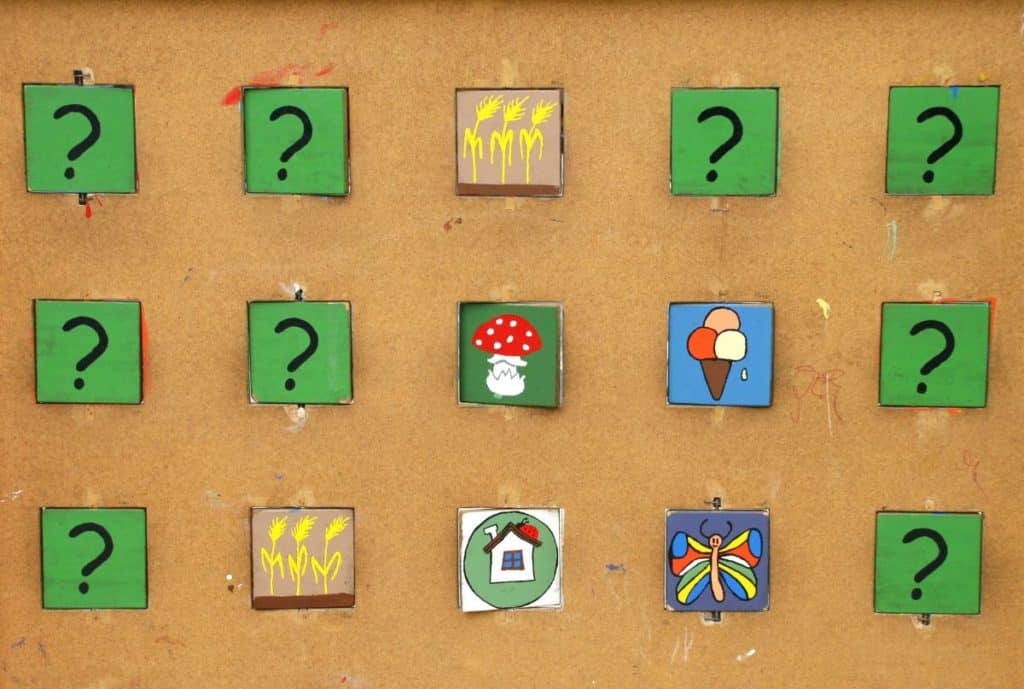
Reading is one of the most critical components of any language and an essential tool for lifelong learning. Reading comprehension is the heart and goal of reading.
Reading comprehension refers to a reader’s ability to interpret a text successfully. Mikulecky and Jeffries point out that reading comprehension means making sense of what readers read and connecting the ideas in the text to what they already know. Duffy defines reading comprehension as the essence of reading because if we do not understand the message, we are not reading.
We provide a comprehensive reading comprehension program for schoolchildren and homeschoolers. © Edublox Pty (Ltd).
Table of contents:
- Five causes of reading comprehension difficulties
- Reading comprehension program
- Reading comprehension difficulties – a success story
Five causes of reading comprehension difficulties
For many students, reading comprehension is a significant problem. There are five causes of poor reading comprehension:
1. Poor decoding skills
Decoding is the act of connecting sounds with symbols. To decode a word,
(a.) you need to know which sound or sounds each letter makes, like how a g sounds in game and how it sounds in gym;
(b.) how to take apart the sounds in a word and blend them; for example, with man, the first sound is /m/, the next sound is /ă/, and the last sound is /n/; and
(c.) how groups of letters can work together to make a single sound, like ch in chip.
This skill needs to be in place for proficient reading to develop, but it’s not enough. There are words that you cannot decode. For example, words whose spelling is very different from their sound, such as “enough.” To successfully read English, you need to recognize this word as you would recognize someone’s face. Words that have a high frequency (occur often) or must be learned by sight are called sight words.
2. Poor fluency
Another condition that is necessary for comprehension is fluency. Fluency is the ability to read “as you speak.” Hudson et al. define fluency this way: “Reading fluency is made up of at least three key elements: accurate reading of connected text at a conversational rate with appropriate prosody or expression.” Nonfluent readers suffer in at least one of these aspects of reading:
(1.) they make many mistakes,
(2.) they read slowly, or
(3.) they don’t read with appropriate expression and phrasing.
This makes intuitive sense. After all, it isn’t easy to understand someone who speaks haltingly or without natural intonation.
3. Poor vocabulary
Being able to pronounce a word correctly does not guarantee one understands its meaning. For example, correctly pronouncing the word archipelago will not be very helpful when reading a passage about Lofoten, an archipelago of Norland, Norway; it is vital that one also understands the word’s meaning, i.e., ‘an island group.’
Decades of research have confirmed vocabulary’s essential role in reading comprehension and students’ overall academic success.
4. Poor memory
Neuroimaging of children showed that, while reading, the brain function of those with reading comprehension problems is quite different and distinct from those with reading disabilities. Those with reading disabilities exhibited abnormalities in a specific region in the occipital-temporal cortex, a part of the brain associated with successfully recognizing words on a page. On the other hand, those with reading comprehension difficulties did not show abnormalities in this region. Instead, they showed specific abnormalities in areas typically associated with memory.

Short-term memory holds information in one’s mind for only a few seconds while it is processed. Long-term memory is where such processed information is permanently stored. Working memory is an intermediary and active memory system in the information-processing area of the brain. It is a vital memory system and one that most of us use daily.
Sentence comprehension depends heavily upon adequate working memory. It helps us interpret lengthy sentences. We use working memory when preserving word order (syntax) is essential to correctly understand a sentence.
Sentences must be held in working memory and must also be integrated. Each sentence is read, understood, associated, and integrated with the previous one. Eventually, the entire paragraph is read, and the reader continues to the next one. By the end of the chapter, the details and main idea need to be retained in working memory; otherwise, the reader may have retained isolated facts but may not know the sequence of events nor understand the main idea.
5. Poor reading comprehension skills
Examples of reading comprehension skills include:
- Comparing and contrasting
- Finding the main idea, important facts, and supporting details
- Sequencing
- Character analysis, plots, and author’s purpose
- Drawing conclusions and inferencing
- Use context clues to understand new words
- Distinguishing between cause and effect
- Distinguishing between fact and opinion
- Predicting what comes next
- Understanding similes, metaphors, and personification
Reading comprehension program
If a child is struggling with decoding and fluency, the program below will not be effective. The program below is aimed at students who can decode and read fluently yet still struggle to comprehend what they are reading.
Below are some guidelines to help you get the maximum benefits from this program:
1. Study the program
The program aims to improve a schoolchild’s reading comprehension; it consists of exercises to improve memory, develop reading comprehension skills, and expand vocabulary.
2. Start learning the exercises
Once you have studied the program, you should read how to execute the exercises. Do not try to learn all the exercises at once.
Let the learner start with Development Tutor. Study the other two exercises in the program once the learner is comfortable with Development Tutor.
3. Find a quiet time and a quiet place
You will want to find a time that is relatively free from distractions, especially in the beginning, so that the learner can concentrate.
4. Find a suitable time
Early morning is a good time since it helps the learner organize their mind for other intellectual challenges they may face during the day. If the learner goes to school and you can only do the program with them after school, they will need a break before beginning the program.
Depending on your situation, you may break the lesson plan into two short sessions instead of one long session. You could, for example, let the learner do Development Tutor in the morning and the other exercises in the afternoon.
5. Determine how many sessions there should be
You will need to determine how many sessions you will do during the week. The program below is approximately 40-50 minutes in length. Ultimately, one would do four lessons per week, especially if the learner’s problem is severe. Three weekly sessions will probably be sufficient if the learner’s problem is not too severe. The basic principle is that the more time you can put into the program, the faster the progress you can expect.
6. Working with more than one child at one time
It is not recommended that you work with two or more learners simultaneously, as you will compromise the effectiveness of the program.
7. Consider lightening the student’s academic load
A child working on developing their brain function may become tired during the initial stages. You may need to cut back on their schoolwork until they function better.
Some parents are hesitant about cutting back on schoolwork, fearing that their child will get further behind than they already are. It might help to think of this analogy: Imagine a car that needs repair and is limping along the highway at 35 miles per hour. You can either continue the journey and eventually reach your destination, or you can stop the car, get it fixed, and then speed to your destination at 65 miles per hour. It is certainly easier to get the car fixed!
Edublox reading comprehension program
Development Tutor for 15-25 minutes (3 exercises)
Development Tutor aims to improve cognitive skills, including short-term and working memory (see cause no. 4 mentioned above).
Each lesson consists of 3 exercises and takes approximately 20 minutes to complete. Requirements for Development Tutor are Windows (7 or newer) and Mac Computers, using Google Chrome. It is also compatible with Android tablets, minimum screen size: 10″; minimum screen resolution: FHD (1920×1080) or FHD+ (1920×1200).
Parents don’t have to sit with their children while they are doing Development Tutor, but they need to keep an eye to ensure that they are doing the exercises without making notes or using aids to get the answers right. However, when doing the logical thinking exercise, they may use any aids.
In the case of younger learners and those with very slow processing speed, extending the timer is recommended. You can set it back to normal in 2-3 months.
Reading comprehension exercise for 15-25 minutes
The Reading Comprehension exercise aims at developing reading comprehension skills (see cause no. 5 mentioned above).
Let the learner complete a reading comprehension worksheet. There are thousands of free comprehension worksheets on the internet. K5Learning.com, for example, offers free comprehension exercises from 1st grade to 5th grade that are ideal for developing reading comprehension skills.
Start with relatively easy ones and gradually, as the learner improves, move to more difficult ones. What is important is that the passage, questions, and answers must be on separate pages.
The learner must now follow the three steps listed below:
- Step 1
The learner must read the passage before reading the questions. They may read the passage several times. What is important, though, is that once they start answering the questions, they may not reread the passage or search for the answers. The questions must be answered from memory.
The learner must use a gray pencil to fill in their answers.
- Step 2
The learner must then take a blue pen, reread the passage, and self-correct their answers (they may now flip between the passage and questions).
- Step 3
Lastly, they must take the answer sheet and, using a red pen, give themself marks based on the answers written in gray pencil. Only half-marks may be awarded for answers that were corrected in blue.
Vocabulary exercise for 10-15 minutes
The Vocabulary exercise aims at expanding vocabulary (see cause no. 3 mentioned above).
To improve the learner’s vocabulary, select three to five words in each reading comprehension worksheet that they do not know the meaning of. Make little word cards with the word on the front and the definition on the reverse. For example, if the word “archipelago” is on the front, the explanation “a group of islands” will be on the reverse.
Let the learner start by studying these three to five word cards; add three to five new cards to the pile every time they do a new reading comprehension worksheet. Regularly review and test the student’s understanding of old word cards: “What is an archipelago?” “Name one word for a group of islands.”
One must ensure that a student’s reading comprehension difficulties have been solved completely before discontinuing the program.
Reading comprehension difficulties – a success story
Giordanna in Milwaukee, WI, contacted Edublox to help her son, who dropped out of college because of learning disabilities. While Elliot’s word recognition and spelling ability were on par, he struggled with reading comprehension and memory. Read her heart-warming story of how Edublox changed his life.
Dear Sue,
When I approached you the first time, Elliot had already dropped off at college since his grades were not even close to allowing him to go to medical school, which was what he wanted.
When he came home, he struggled through his EMT certification, since he wanted to work in the medical field.
As he started working with Edublox, his father convinced him to join the Navy and be a corpsman. Six months into Edublox, he took the ability/cognitive test and scored in the 85th percentile! He never scored that high on any academic test. He was on the 75th percentile in reading and comprehension! Usually, his reading and comprehension percentile was 55th to 65th. Nice jump! Even my husband was impressed! My husband is a physician who tends not to believe anything that is not proven in a lab!
The Navy ended up not taking him because, in his elementary school, he was labeled “educationally autistic.”
Meanwhile, Elliot started working as EMT/security guard in a factory. One day the manager asked him to teach his colleagues the five steps to take when someone has a heart attack. As Elliot told me when he had to study them (almost one year prior), he struggled through. This time, though, he had to read them only once to memorize them. He memorized even the wording making it easy to repeat the protocol to his colleagues.
Once, as we were having lunch, he told me about a site where he likes to go and read academic articles on the most disparate subjects. I told him I was surprised to hear that because I thought that he got his information only through videos. To that he answers, “That was before because I used to get lost in my reading. Now I do not get lost anymore.” That was music to my ears since he could clearly see a “before” and an “after.”
Encouraged by his successes, he signed up for a paramedicine program at a technical college, where he has been getting grades of B+/ A. It is true that, as my husband reminds me, he is attending only a technical college. However, he never got grades this high, not even in elementary school. A few days ago, he told me that studying has become so much easier for him that sometimes he feels he is cheating because he does not have to struggle as much, and he is getting better grades than ever.
Needless to say, his academic successes had an incredible impact on his self-esteem. He is much happier and much less anxious about his future.
He is also making bolder career plans. After the associate degree in paramedicine, he wants to continue to finish his bachelor’s degree. And after that, he wants to get the highest education he can in the medical field.
My very best,
Giordana
Edublox offers cognitive training and live online tutoring to students with dyslexia, dysgraphia, dyscalculia, and other learning disabilities. Our students are in the United States, Canada, Australia, and elsewhere. Book a free consultation to discuss your child’s learning needs.
Authored by Sue du Plessis (B.A. Hons Psychology; B.D.), an educational specialist with 30+ years of experience in learning disabilities. © Edublox Pty (Ltd).
References:
Duffy, G. G. (2009). Explaining reading: A resource for teaching concepts, skills, and strategies (2nd ed.). New York, NY: Guilford Press.
Hudson, R. F., Lane, H. B., & Pullen, P. C. (2005). Reading fluency assessment and instruction: What, why, and how? The Reading Teacher, 58(8): 702–14.
Mikulecky, B. S., & Jeffries, L. (2007). Advanced reading power. Pearson Education.


